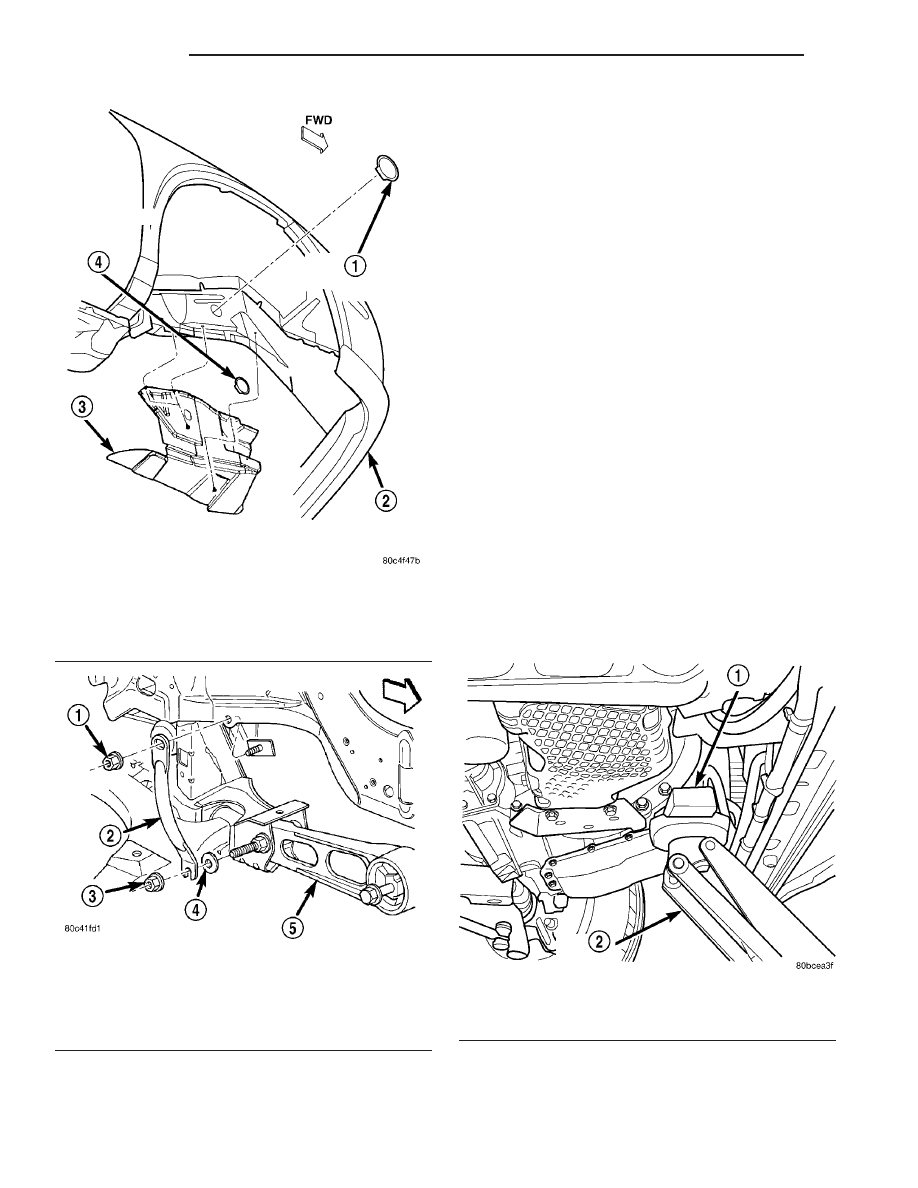Chrysler PT Cruiser. Manual - part 215

(4) Install accessory belt splash shield (Fig. 76)
and lower vehicle.
ADJUSTMENTS
ENGINE TORQUE STRUT ADJUSTMENT
The upper and lower torque struts need to be
adjusted together to assure proper engine positioning
and engine mount loading. Whenever a torque strut
bolt(s) is loosened, this procedure must be performed.
(1) Remove accessory drive belt splash shield (Fig.
76).
(2) Remove pencil strut (Fig. 77).
(3) Loosen the upper and lower torque strut
attaching bolt at the suspension crossmember and
shock tower bracket (Fig. 75).
(4) The engine position may now be adjusted by
positioning a suitable floor jack on the forward edge
of the transmission bell housing (Fig. 78).
NOTE: The floor jack must be positioned as shown
in (Fig. 78) to prevent minimal upward lifting of the
engine.
(5) With the engine supported, remove the upper
and lower torque strut attachment bolt(s) at shock
tower bracket and suspension crossmember (Fig. 78).
Verify that the torque struts are free to move within
the shock tower bracket and crossmember. Reinstall
the torque strut bolt(s), but do not tighten.
Fig. 76 Splash Shield
1 - RIGHT MOUNT BOLT ACCESS PLUG
2 - FASCIA
3 - SPLASH SHIELD
4 - CRANKSHAFT BOLT ACCESS PLUG
Fig. 77 Pencil Strut
1 - NUT
2 - PENCIL STRUT
3 - NUT
4 - FLAT WASHER
5 - LOWER TORQUE STRUT
Fig. 78 Floor Jack Positioning
1 - WOOD BLOCK
2 - FLOOR JACK
9 - 56
ENGINE
PT
TORQUE STRUT (Continued)